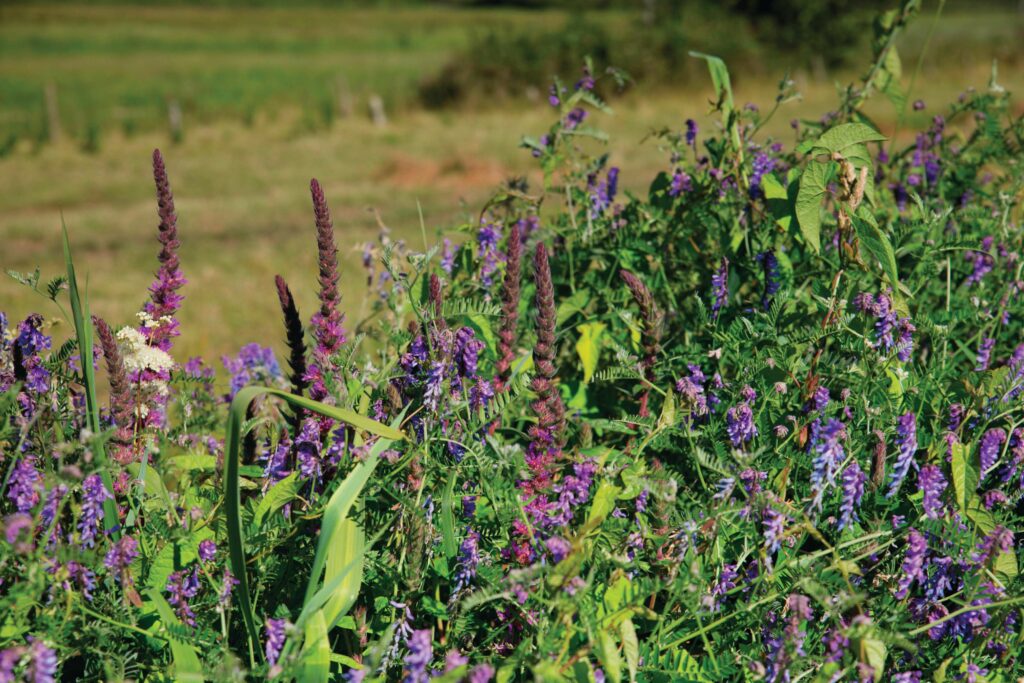COUNTRYFILE ISSUES
John Craven
WILL NEW GOVERNMENT PLANS REVERSE NATURE DECLINE?

Cleaner waterways, sustainable farming, more land for wildlife, a species survival fund for threatened creatures such as hedgehogs and red squirrels and a pledge that everyone in England will live within a 15-minute walk of green spaces.
Those are just some of the targets highlighted in two new Whitehall blueprints, as the Government strives to fulfil its promises to improve the environment and reverse nature decline within a generation.
Three years after Brexit, final details of these policies – the Environmental Improvement Plan (EIP) which fleshes out commitments first made in 2018, and the Environmental Land Management schemes (ELMs) which replace the £3 billion-plus yearly payments our farmers used to get from the EU – have been revealed. DEFRA cabinet minister Thérèse Coffey says, in the long haul, nature will be at the heart of every decision the Government makes. She adds: “I know there is much more to do to restore nature and, to level with you, some of these challenges are not so easy to fix as we all might hope.”
The far-reaching ambitions of the EIP include: creating 2,000 square miles of new wildlife habitat; restoring 400 miles of river; upgrading 160 wastewater treatment works to cut sewage spillage; and setting new targets for reducing waste plastic, food, metal, glass and paper by 2028.
As for everyone being a short walk from green spaces, it’s reckoned that over a quarter of us live more than 15 minutes from a public park, so that commitment will be closely monitored by campaigners.

“Coffey says nature will be at the heart of every Government decision”
Critics question whether adequate funding will be made available and the official watchdog, the Office for Environmental Protection, warns the Government is not meeting many of its current environmental targets. Its chairwoman Dame Glenys Stacey says: “It is deeply disappointing that progress against so many crucial targets is falling short of what is needed to secure nature recovery.”
Latest figures reveal that the abundance of 149 key species of plants and animals in the UK crashed by 82% in the five decades from 1970.
FINANCIAL INCENTIVES
The other blueprint, ELMs, sets out detailed plans on how farmers will be paid to work the land sustainably, with a target of net zero agriculture by 2040. As well as improving soil quality, they will get payments for actions such as managing hedgerows for wildlife and controlling crop pests without insecticides.
“This is crunch time for a sector that has tolerated years of turbulence and uncertainty,” says Mark Tufnell, president of the Country Land and Business Association. “Make no mistake, the move towards payment for environmental delivery is a welcome one – it will benefit the planet, the public and, in time, the farmer. But this major change in agricultural policy comes at a time of rampant inflation, poor labour supply and constant extreme weather events. The stakes for farmers could not be higher…”
The hope behind ELMs is that most farmers will adopt nature-friendly measures on their land, but will ELMs be as financially attractive as the old EU payments for food production, which many relied on for their survival? The rural heartlands anxiously await the outcomes of Westminster’s plans.
Watch John on Countryfile, Sunday evenings on BBC One.